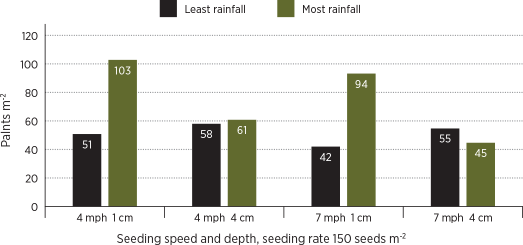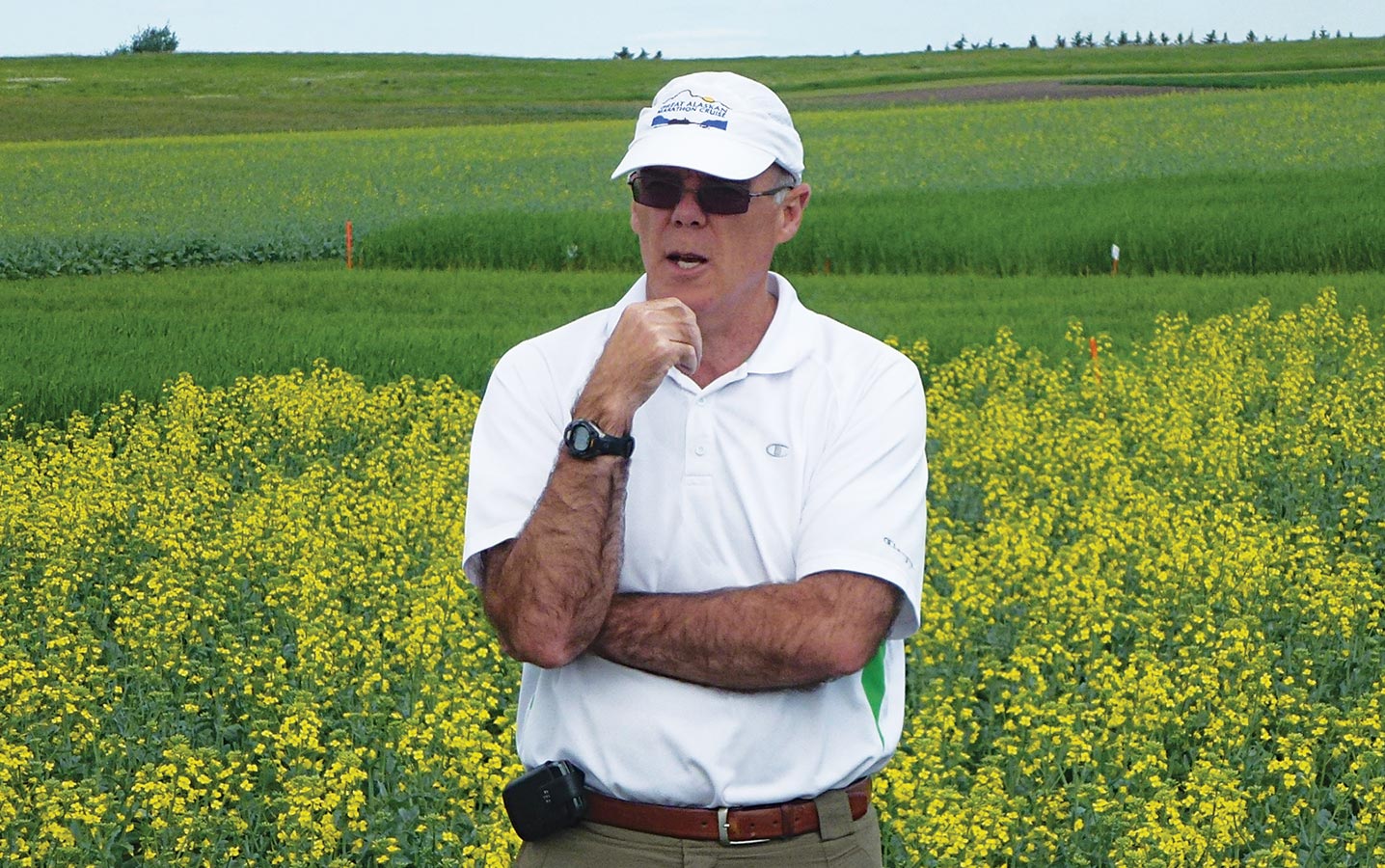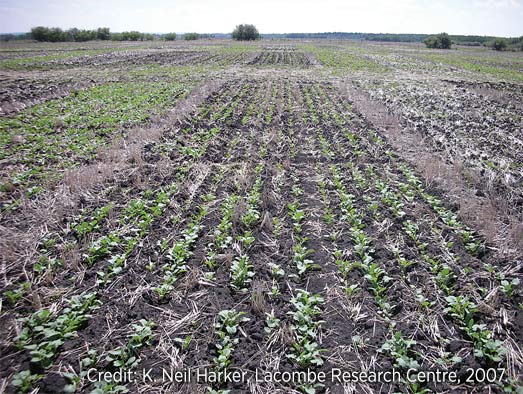Seed shallow
Canola growers who consistently seed at a shallow depth of one centimetre can reap significant benefits. These include improved emergence density, decreased days to emergence, increased canola ground cover, decreased days to flowering and maturity, and decreased green seed levels.
Neil Harker with Agriculture and Agri-Food Canada (AAFC) in Lacombe, AB led a three-year project to study factors affecting canola emergence and quality, including seed type, seeding speed and seeding depth. Canola seed is a substantial input cost and poor canola stand establishment is a continuing concern for canola growers. On average, only 50 percent of planted seeds emerge, even when seed has a germination analysis above 90 percent.
Direct-seeding experiments were conducted at four sites in Western Canada from 2008 to 2011: Lacombe, AB, Lethbridge, AB, Scott, SK, and Indian Head, SK. Data was collected for 10 of 12 possible site years. Flooding, hail and frost prevented data collection for two site years. Hybrid or open-pollinated glyphosate-resistant canola was seeded at speeds of four or seven miles per hour and at depths of one or four centimetres in replicated trials. Data collection included canola emergence density, flowering dates and durations, crop maturity, canola yield, oil and protein content, and percent green seed.
The researchers found that canola emergence density was greater for canola seeded at a depth of one centimetre compared to four centimetres. Soil moisture did influence results. Canola emergence averaged 35 percent for both seeding depths when precipitation levels were low. Differences between depths became significant with ample moisture. Emergence levels increased to an average of 66 percent when precipitation levels were high and when seeding depth was one centimetre.
Seeding at one centimetre versus four centimetres also decreased days to emergence, increased canola ground cover, decreased days to flowering and days to maturity, and tended to decrease green seed levels.
The higher stand densities that result from shallower seeding depth also create more competitive crop canopies, which can reduce the need for additional herbicide applications, reduce herbicide input costs and reduce selection pressure for herbicide resistance. Relatively high canola stand densities can also improve the ability of canola to successfully tolerate and accommodate biotic and abiotic stress.

The study also compared results for hybrid versus open-pollinated cultivars. There was no difference in emergence density between the two cultivars. However, the hybrid cultivar emerged one day earlier, grew faster, and covered the ground more quickly than the open-pollinated cultivar. These are important results from a crop-weed competition standpoint. Overall agronomic performance of hybrid canola, including seed yield and quality, was also usually superior to open-pollinated canola.Seeding speed influenced canola variables to a much smaller degree than cultivar or seeding depth.
Principal investigator: K. Neil Harker, Agriculture and Agri-Food Canada, Lacombe, AB
Collaborators: Robert Blackshaw, Eric Johnson, Guy Lafond, Bill May
Published: Harker, K. N., J. T. O’Donovan, R. E. Blackshaw, E. N. Johnson,
G. P. Lafond, and W. E. May. 2012. “Seeding depth and seeding speed effects on no-till canola emergence, maturity, yield and seed quality,” Can. J. Plant Sci. 92:795-802.







